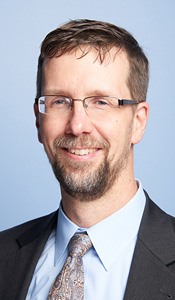Program Information
The Science of QA

T Pawlicki
M Carlone
L Mazur
E Ford
T Pawlicki1*, M Carlone2*, L Mazur3*, E Ford4*, (1) UCSD Medical Center, La Jolla, CA, (2) Princess Margaret Hospital, Toronto, ON, (3) North Carolina State University, Chapel Hill, NC, (4) University of Washington, Seattle, WA
Presentations
TU-EF-BRD-0 (Tuesday, July 14, 2015) 1:45 PM - 3:45 PM Room: Ballroom D
Research related to quality and safety has been a staple of medical physics academic activities for a long time. From very early on, medical physicists have developed new radiation measurement equipment and analysis techniques, created ever increasingly accurate dose calculation models, and have vastly improved imaging, planning, and delivery techniques. These and other areas of interest have improved the quality and safety of radiotherapy for our patients. With the advent of TG-100, quality and safety is an area that will garner even more research interest in the future. As medical physicists pursue quality and safety research in greater numbers, it is worthwhile to consider what actually constitutes research on quality and safety. For example, should the development of algorithms for real-time EPID-based in-vivo dosimetry be defined as “quality and safety” research? How about the clinical implementation of such as system? Surely the application of failure modes and effects analysis to a clinical process would be considered quality and safety research, but is this type of research that should be included in the medical physics peer-reviewed literature? The answers to such questions are of critical importance to set researchers in a direction that will provide the greatest benefit to our field and the patients we serve.
The purpose of this symposium is to consider what constitutes research in the arena of quality and safety and differentiate it from other research directions. The key distinction here is developing the tool itself (e.g. algorithms for EPID dosimetry) vs. studying the impact of the tool with some quantitative metric. Only the latter would I call quality and safety research. Issues of ‘basic’ versus ‘applied’ quality and safety research will be covered as well as how the research results should be structured to provide increasing levels of support that a quality and safety intervention is effective and sustainable. Examples from existing peer-reviewed research will be used to highlight the main points. Historical, medical physicists have leveraged many areas of applied physics, engineering and biology to improve radiotherapy. Research on quality and safety is another area where physicists can have an impact. The key to further progress is to clearly define what constitutes quality and safety research for those interested in doing such research and the reviewers of that research.
Learning Objectives:
1. List several tools of quality and safety with references to peer-reviewed literature.
2. Describe effects of mental workload on performance.
3. Outline research in quality and safety indicators and technique analysis.
4. Understand what quality and safety research needs to be going forward.
5. Understand the links between cooperative group trials and quality and safety research.
Contact Email:

